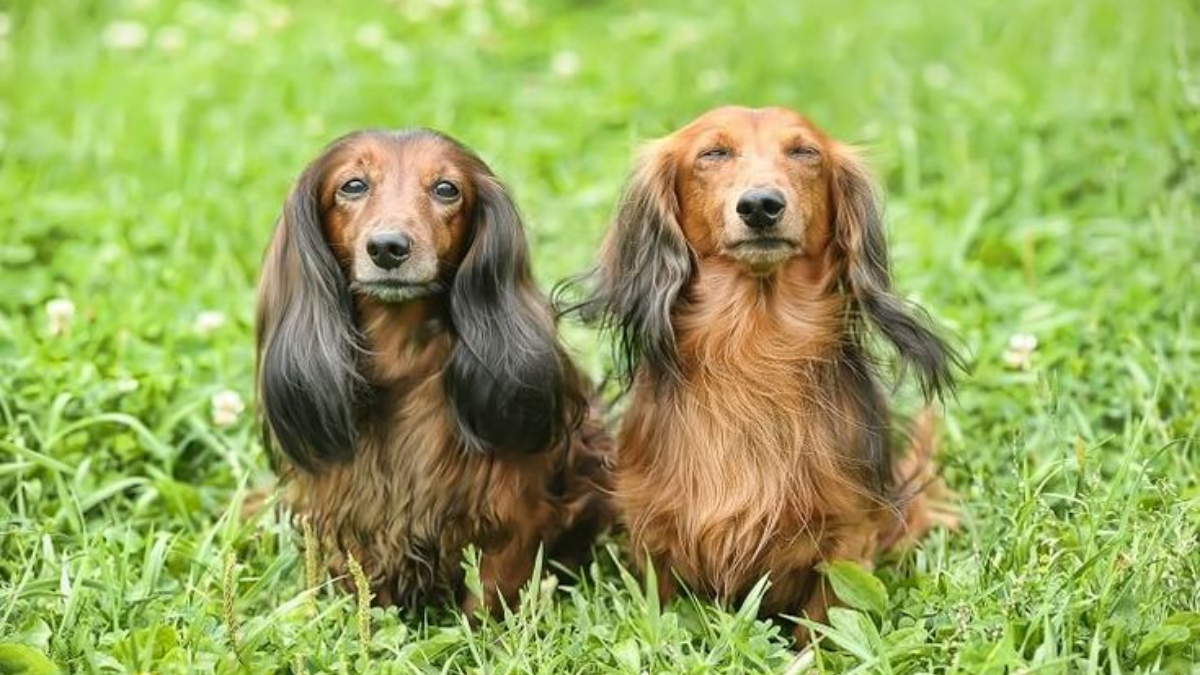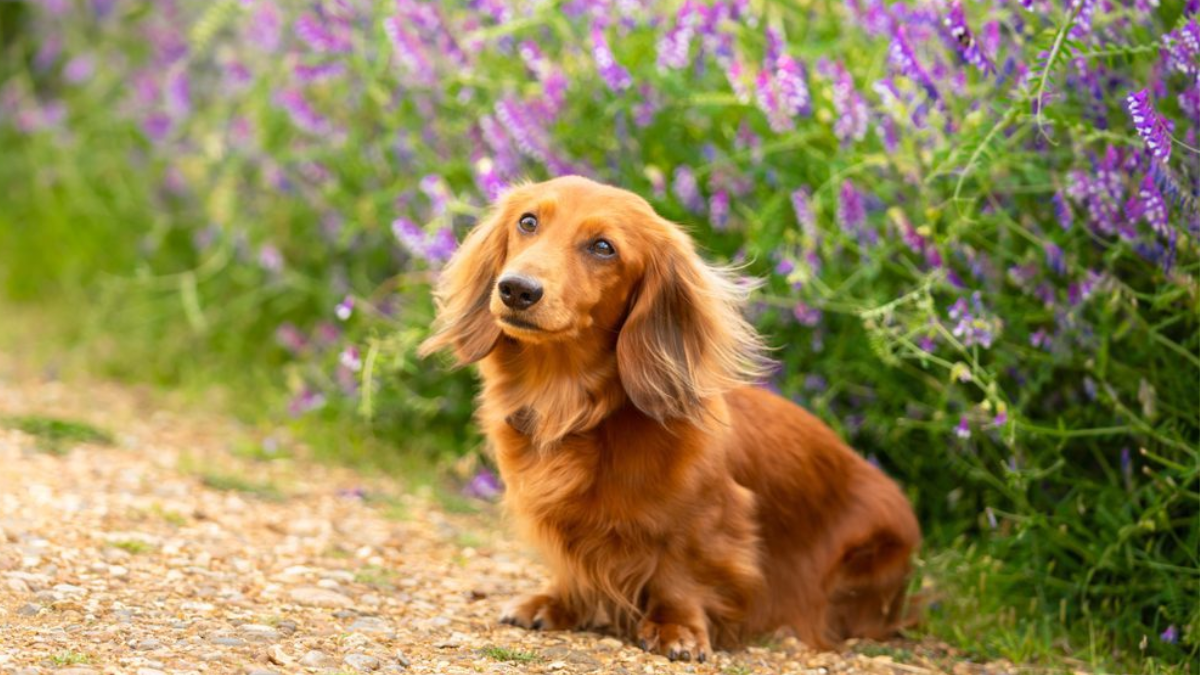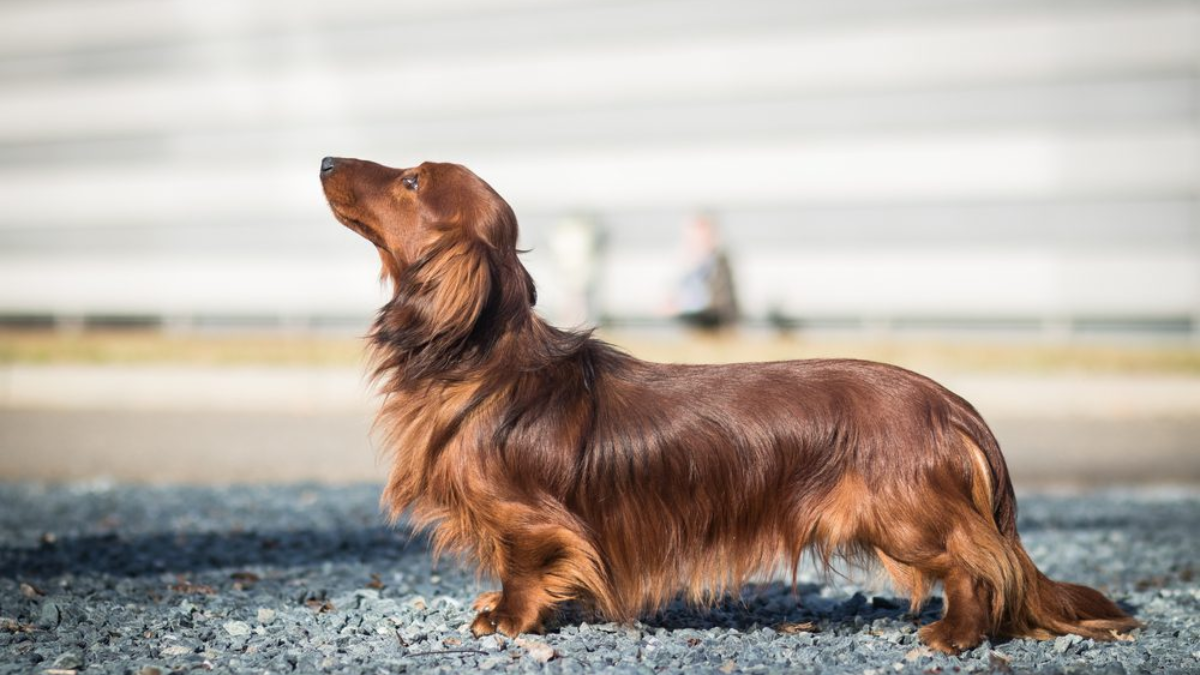The Long-Haired Dachshund stands out within the breed for its elongated body, short legs, and flowing coat of fur. Their bold and tenacious personality mirrors that of their short-haired counterparts, yet their silky coat adds elegance. Long hair offers extra insulation, particularly beneficial in cooler climates. Ensure proper Long-Haired Dachshund Care to maintain their health and happiness.

Developed for scent, chasing, and flushing out burrowing animals, the long-haired dachshund maintains the breed's reputation for an excellent nose and avid hunting spirit. This variety of dachshunds is the result of crossbreeding with various spaniels and setters to produce a dog with longer, wavier fur. The meticulous grooming requirements for the long-haired dachshund are a consideration for potential owners, necessitating regular brushing to avoid tangles and mats.
Though small in size, the breed is known for its confident and lively temperament, making it a popular choice for families and individuals alike. The long-haired dachshund's distinctive look and charismatic disposition have made it a beloved companion around the world. Their adaptability to different living conditions, from apartments to houses with yards, contributes to the breed's enduring appeal.
Ensure Your Long-Haired Dachshund's Safety and Well-being with the Fi Dog Collar!
Caring for a Long-Haired Dashhound is an exciting journey, but it requires careful preparation and an understanding of the breed's unique needs. From grooming tips to health considerations, we've covered it all in this comprehensive guide. Now, take the next step in ensuring your pup's caring and well-being with the Fi Dog Collar. The Fi collar offers GPS tracking, activity monitoring, and even geofencing features via the Fi app, providing peace of mind knowing your furry friend is safe and secure.
Breed Origins and History
The Dachshund breed, recognized for its distinctive long body and short legs, has a rich heritage rooted in Germany, where it was developed for hunting. Over time, the breed diverged into different coat types, including the elegant long-haired variety.
Early Beginnings
The history of Dachshunds dates back to at least the 15th century in Germany. Initially bred to hunt, their elongated bodies and keen sense of smell made them particularly effective for tracking badgers, rabbits, and other burrow-dwelling animals. They are a proud symbol of German culture and tradition.

Development of Coat Types
Dachshunds' coats have been refined over the centuries to suit different hunting conditions, resulting in three distinct types:
- Smooth-haired: The original coat type, characterized by short, dense fur.
- Wire-haired: Developed in the late 19th century, featuring a coarse, thick, and wiry outer coat with a softer undercoat, ideal for protection from thorny underbrush.
- Long-haired: Bred for colder climates, this type has a longer, elegant, and sometimes slightly wavy coat, which provides better insulation.
The long-haired Dachshund, in particular, emerged through selective breeding, likely involving various spaniels or the German Stoberhund, resulting in its luxurious coat. The breed comes in two sizes: the standard and the miniature. The standard was the original size utilized for hunting, while the miniature was later bred as a smaller alternative suited to chasing smaller prey like rabbits.
Physical Characteristics
The Long-haired Dachshund is distinguishable from its smooth and wire-haired counterparts primarily by its coat. With a silhouette marked by the breed's characteristic long body and short legs, the physical traits of a Long-haired Dachshund are distinctive. These dogs carry with them a certain elegance, due in large part to the luxurious coat that frames their unique form.

Defining Features
The Long-haired Dachshund has a silky, slightly wavy coat that is longer on the underbody, ears, chest, and legs, which is often referred to as feathering. The breed's ears are elongated and hang close to the head, accentuating their expressive demeanor. Legs are short in comparison to their long bodies, giving Long-haired Dachshunds their well-known low silhouette.
Size Variations
| Classification | Weight | Chest Circumference |
|---|---|---|
| Standard | Over 16 pounds | Typically 35 cm+ |
| Miniature | 11 pounds and under | Typically 30-35 cm |
| Kaninchen | 8-11 pounds | Depends on the breed standard in specific countries |
Long-haired Dachshunds are available in three distinct sizes: Standard, Miniature, and Kaninchen, which is German for "rabbit" size and not recognized by all breed standards.
Color Patterns
Long-haired Dachshunds exhibit a vibrant spectrum of coat colors and patterns. Colors can range from solids like cream and fawn to bi-colors such as black and tan. Recognizable patterns include:
- Dapple (merle): a pattern of dark and light patches
- Brindle: stripes on a darker background
- Piebald: a pattern with well-defined spots of color on a white background
- Sable: a dark overlay on a lighter coat
These patterns and colors, combined with the breed's flowing coat, offer a distinctive array of Long-haired Dachshunds, each with its unique flair.
Temperament and Behavior
Long-haired Dachshunds are known for their distinctive combination of personality traits that make them endearing yet challenging companions. Their behavior is often a reflection of their upbringing and training.

Personality Traits
Long-haired Dachshunds are intelligent and playful, which makes them engaging pets. They are also known for being loyal and affectionate towards their family, forming strong bonds with their owners. However, they can exhibit an independent streak which sometimes translates to stubbornness, particularly during training sessions. This breed is naturally alert, which coupled with their loyalty, makes them excellent watchdogs. Their tendency to bark can be a manifestation of their watchful nature.
Socialization and Training
Early socialization is crucial for long-haired Dachshunds to ensure they develop into well-behaved adults. Introducing them to a variety of people, animals, and environments can help mitigate potential aggressive behavior towards strangers. Consistent and patient training is also necessary, given their inclination to be willful.
Positive reinforcement techniques work well with this breed, which thrives on praise and treats. The energy levels in long-haired Dachshunds are typically high, so incorporating play into their training can be beneficial. Despite their sometimes independent nature, with the correct approach, they can be trained effectively.
Health and Maintenance
Long-haired Dachshunds are charming dogs known for their distinctive shape and beautiful coats. They require particular attention to their health and maintenance to prevent common issues and ensure a happy, healthy life.
Common Health Issues
Intervertebral Disc Disease (IVDD): These dogs are prone to IVDD, a condition where spinal discs herniate or degenerate, leading to pain, nerve damage, and even paralysis. Regular vet check-ups and careful monitoring for signs like reluctance to jump or visible back pain are essential.

Obesity: Maintaining a healthy weight is critical, as obesity can exacerbate back problems and other health conditions. A proper diet and regular exercise can help manage weight effectively.
Dental Health: Oral health issues are common in small breeds, including long-haired Dachshunds. Regular dental checkups and teeth cleanings are recommended to prevent dental diseases.
| Health Issue | Description | Prevention/Treatment |
|---|---|---|
| IVDD | Spinal condition affecting discs | Monitor for symptoms, manage activity |
| Obesity | Excess body weight | Proper nutrition, regular exercise |
| Dental Health | Problems with teeth and gums | Regular dental checkups and cleanings |
Grooming and Care
Brushing: Regular brushing is required to prevent tangles and mats in their long fur. Brushing several times a week helps in reducing shedding and keeping their coat in good condition.
Bathing: These dogs do not require frequent baths, but when they do, use a dog-specific shampoo and ensure to thoroughly dry their long coat to prevent cold.
Nail Care: Long nails can affect a Dachshund's posture and gait, potentially leading to back issues. Clipping their nails regularly is important to keep them comfortable and fit.
Exercise: Although they are small, long-haired Dachshunds are active and need daily exercise to stay in shape and prevent obesity.

Tail and Ear Care: Pay attention to their tail and ears during grooming, as these areas can be prone to mats and require gentle care to keep them clean.
| Aspect | Description | Grooming/Care Routine |
|---|---|---|
| Brushing | Prevents tangles and mats in fur | Brush several times per week; gentle detangle |
| Bathing | Infrequent baths with dog-specific shampoo | Bathe as needed; dry thoroughly |
| Nail Care | Prevents posture and gait issues | Clip nails regularly |
| Exercise | Keeps dog fit and active | Daily walks, play sessions |
| Tail and Ear Care | Prone to mats, requires attention | Check during grooming; clean gently |
Conclusion:
In conclusion, Long-Haired Dachshund Care is paramount for their overall health and happiness. By maintaining regular grooming sessions, providing nutritious meals, and scheduling routine vet check-ups, you're guaranteeing they thrive. Your dedication will be met with unwavering loyalty and companionship. Prioritize their care, and you'll share countless joyful moments together.






